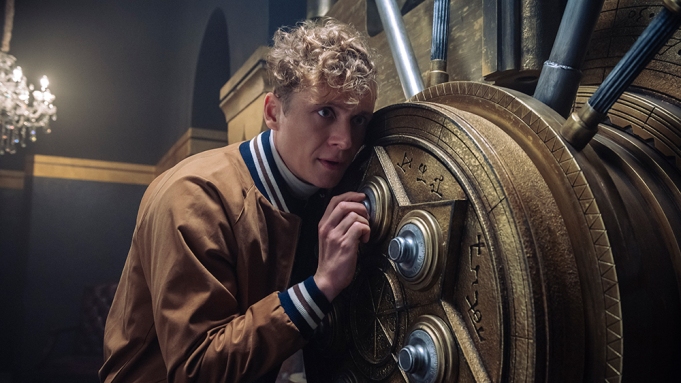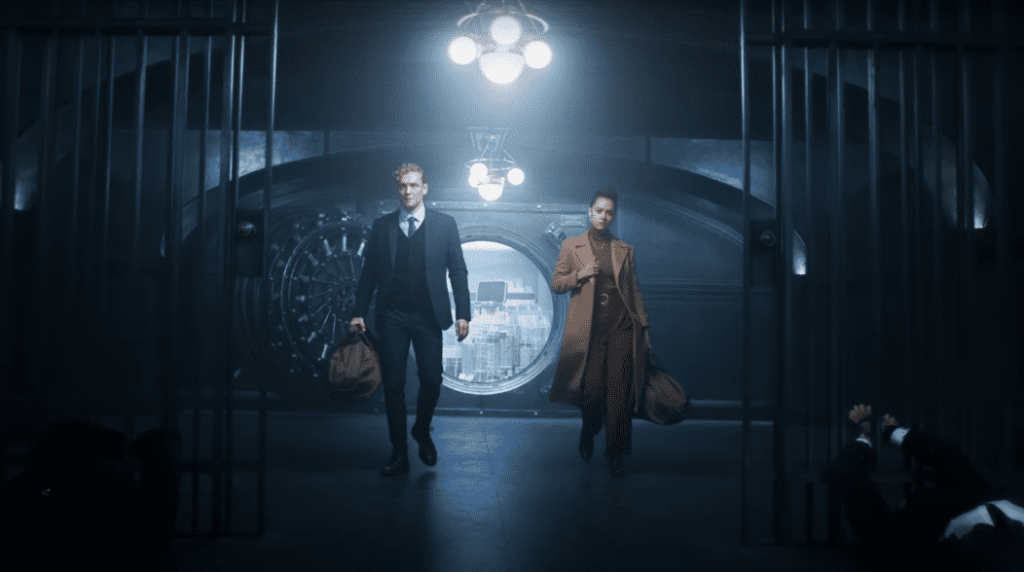The latest entry in Zack Snyder’s Army of the Dead universe for Netflix sees Matthias Schweighöfer return to star as fan favourite Ludwig Dieter in an origin story for the character, as well as to direct the film. The prequel marks the second entry in Snyder’s franchise and explores German safecracker Dieter’s introduction to the world of crime and big scale safecracking that takes him into the events of this year’s earlier first instalment.
As a whole, Army of Thieves works well enough as a prequel, serving as a precursor that establishes the personal significance and stylised dramatism of Dieter’s approach to safecracking the Götterdämmerung safe in Las Vegas that stood as the ultimate task of Army of the Dead.
The action segments feel engaging and fresh, although they are admittedly sparse. As acknowledged by the film, Dieter is not a typical action hero but an intellectual. What would elsewhere come across to be relatively mediocre accomplishments, such as catching up to a slow-moving freight train or evading pursuing police cars by traversing down an alleyway on a bicycle, feel like small triumphs, both personally and physically.
Elsewhere, the film does an excellent job of making the safecracking sequences feel as tense, tactile and captivating as its fight sequence counterparts via some impressive virtual camerawork and visual effects when it comes to the insides of the mechanisms of the various safes.
Unfortunately, the screenplay here is painfully generic in parts, both in terms of speech and story. Written by Shay Hatten, one of the three co-writers of Army of the Dead, it sadly features some laughable dialogue. It would perhaps have been nice to see Schweighöfer himself given the opportunity to attempt to write the script, as across both films, it truly does feel like he fits flawlessly as Dieter, epitomising the peculiar tone of the character and the world he inhabits.
Upon their introductions, the various members of the criminal team feel more like caricatures. With its ensemble of eccentric and idiosyncratic characters, the film initially comes across like a parody of the action-thriller heist genre with, for example, its self-aware and reflective discussion of movie tropes. These moments alone are particularly comedic. However, the narrative unfolds in a serious light, presenting continuous attempts at emotional beats. Perhaps the intention was to illustrate that there is more depth to these characters than first meets the eye in spite of their hyperbolic entrances. If this was the desired outcome, it was not fully realised or achieved.
The majority of the character development is forced and unnatural, and consequently, most character arcs do not feel believable. For instance, the growing romance between Dieter and Gwen feels completely unnecessary, hurried and inauthentic. As a result of this incessant tonal mismatch and Schweighöfer directing somebody else’s script, the performances are jarring and inconsistent, in spite of the actors’ best efforts. Aside from Schweighöfer, Ruby O. Fee and Nathalie Emmanuel are the definite standouts, whereas Stuart Martin as Brad Cage, Guz Khan as getaway driver Rolph and Jonathan Cohen as French detective Delacroix are almost walking parodies. The film undoubtedly struggles to decide what approach it wants to take.
Hans Zimmer works alongside Steve Mazzaro to produce a score that is at once quirky and tense, perfectly matching the ensemble of colourful characters and the heist safecracking atmosphere, respectively, even if it does somewhat resemble an off-kilter rendition of his own work for Sherlock Holmes. Meanwhile, Schweighöfer reunites with cinematographer Bernhard Jasper, with whom he has collaborated on a number of previous projects as an actor and a director. Jasper offers clean visuals, capturing the dullness of Dieter’s day-to-day life before his recruitment with more conventional framing and grey colour grading that contrasts to the more expansive and inventive approaches found later on. However, though not as extreme or overt as its implementation in Army of the Dead, its utilisation of dreamlike soft focus and intense closeups during certain moments can seem slightly derivative and imitative like the score.
The overarching story all appears a bit too safe and generic, simultaneously feeling rushed and overlong. It almost feels like a miniseries tightly squeezed into a feature-length runtime. For a beloved character whose future in the franchise remains uncertain, the ending of this film feels unsatisfactory and slightly underwhelming.
Whilst Schweighöfer once more slots effortlessly into place as Dieter and whilst the protagonist manages to have everything click perfectly during his safecracking endeavours, the film itself does not follow in this same vein of meticulous perfection.
Nonetheless, this title’s release characterises an interesting approach to devising a movie franchise, in that each of its pieces could conceivably be viewed first and that they can be consumed in any order. Indeed, taking this film into a completely different genre is commendable, but it feels too generic for the most part.
Verdict
Ultimately, ardent fans of Army of the Dead are likely to love this outing as it further develops the worldbuilding of Snyder’s predecessor and focuses its attention on a cherished character, yet also managing to stand on its own two feet in a completely separate genre.




